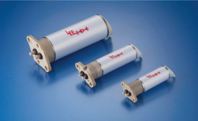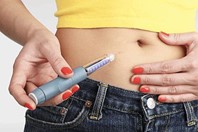TESTING WHITE PAPERS, APPLICATION NOTES, & CASE STUDIES
-
Thermal Imaging Helps To Study Non-Contact Electromagnetic Induction Heating For Eradicating Bacteria And Yeasts From Metal Implants
Infections in joint replacement surgery are a major factor in the failure of the used metal implants, especially when more strains of bacteria become resistant to antibiotics. Heating up the joints would eliminate bacteria and yeast, but the concern is whether or not this can be done in a non-invasive fashion.
-
LIST Researchers Use FLIR Cameras To Study The Electrocaloric Effect
Refrigerant devices typically use fluid coolants turned into gases to cool things down. These gases, however, may become harmful to the environment, so research is being done on the use of solid materials as a substitute to cool down food, beverages, medicine, and even electronic devices.
-
Toxicological Risk Assessment Of Medical Devices: An Overview
The FDA requires toxicological risk assessments performed for most medical device submissions founded on the notion that if all of the constituents of a medical device are known, then the safety of the device can be assessed based on the toxicology of those constituents.
-
FLIR Thermal Cameras Help To Reduce The Invasiveness Of Cochlear Implant Surgery
The surgical placement of Cochlear hearing implants behind the human ear requires a highly trained surgeon, and can result in facial nerve damage, meningitis, tinnitus, infections, cerebrospinal fluid leakage, and potentially more.
-
From “Guess” To “Best”: How Infrared Cameras Are Increasing Accuracy And Insight In Product Testing
This article explores how infrared (IR) cameras deliver a major data-gathering advantage over legacy approaches to temperature measurement, an advantage that can prevent costly product failures and safety hazards, providing an immediate and ongoing return on investment.
-
Thermal Imaging Cameras Allow Machines To Read Human Emotions
Scientists are researching how machines can understand human emotions through thermal imaging. In order for Artificial Agents (AAs) to set up contingent emotional and psychophysiological interaction with humans, the automatic nervous system (ANS) must be monitored and translated efficiently.
-
Documentation In Device Studies – Proving Patient Protection
I can still recall the voice of my thesis advisor in graduate school saying in regards to our laboratory research, “If it’s not documented, it’s not done!”. Since those grad school days, I’ve had a love-hate relationship with documentation. By Brandy Chittester, IMARC Research, Inc.
-
Tribology And Testing Of Orthopedic Implants
The orthopedic implant industry is in a continual state of development, witnessing an explosion of novel materials, designs, and applications. This process is, however, often laced with challenges and articulating joints can present the greatest number of these. By Aia Malik, Lucideon, and Chris Pickles, Ph.D.
TESTING VIDEOS, WEBINARS, AND PODCASTS
-
TEAM Technologies, a company known for making toothbrushes, is now on the front lines of making rapid test kits for COVID-19. They plan to manufacture 3 million kits by the end of the year and increase production to 3 million per month for as long as tests are needed.
TESTING NEWS
-
Molecular diagnostics is increasingly used for the rapid detection and identification of existing and emerging pathogens. The need for rapid results has required testing to move from normal settings, such as physician’s offices, to smaller, more widespread, and often temporary point of care (POC) locations.
-
Medical device manufacturers and designers must overcome various challenges to succeed in an expanding global marketplace, challenged along the way by aspects of design, research, validation, and bringing their devices to a competitive market in a cost-effective manner.
-
Insight on how engineers can gain an understanding of how the process works and how they can participate productively.
-
How do you design a usability test that mimics the panicked, stressful situation that a user may be in when he or she is using your medical device in the real world?
-
Because the validation test is required human factors testing, it can be tempting to skip over preliminary human factors activities during the development process. However, this approach is problematic from both a device usability and a safety standpoint.
-
The first article in this series, Risk-Based Approaches To Establishing Sample Sizes For Process Validation (June 2016) provided and established the relationship between risk and sample size. This article will demonstrate the use of reliability-based life testing for process validation.
-
When studies are successful, human factors (HF) validation can be as straightforward as checking off the boxes on a study protocol. If all the pieces of testing don’t come together as planned, however, HF validation can be a complicated endeavor. At the recent HFES Symposium on Human Factors and Ergonomics in Health Care, we shared our thoughts on how to know whether or not you’ve cleared that last hurdle.
-
More and more medical devices have some sort of software component to them. The teams responsible for testing this software often rely on scripted testing, both manual and automated, to decrease the risk of defects in a product under development. The problem with this approach is that scripted testing is not meant to identify error conditions in scenarios that significantly deviate from the design or requirements, even if a comprehensive risk management plan is followed. To find these hidden or divergent risks, you need to go off script, and that’s where adding exploratory testing can help.





